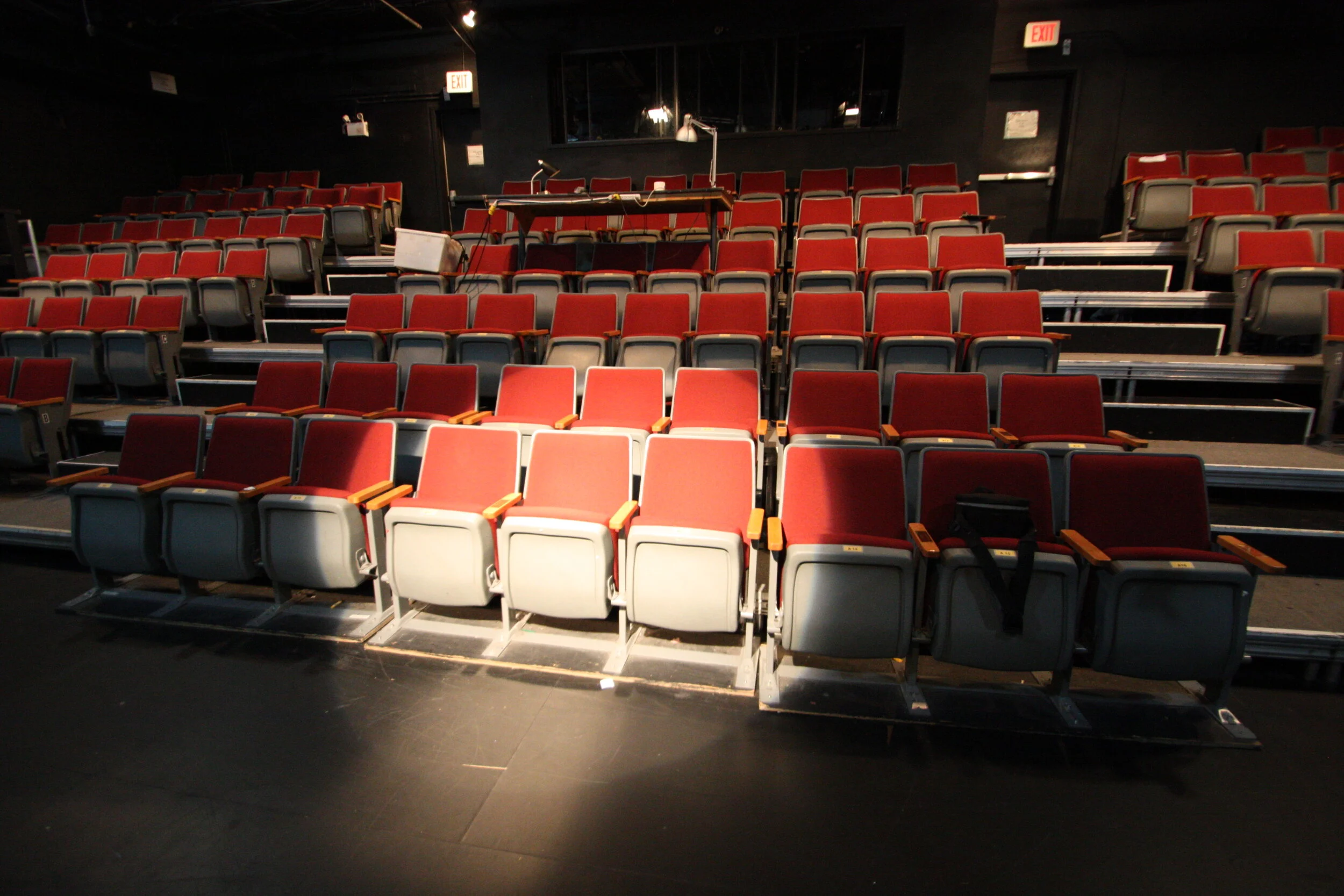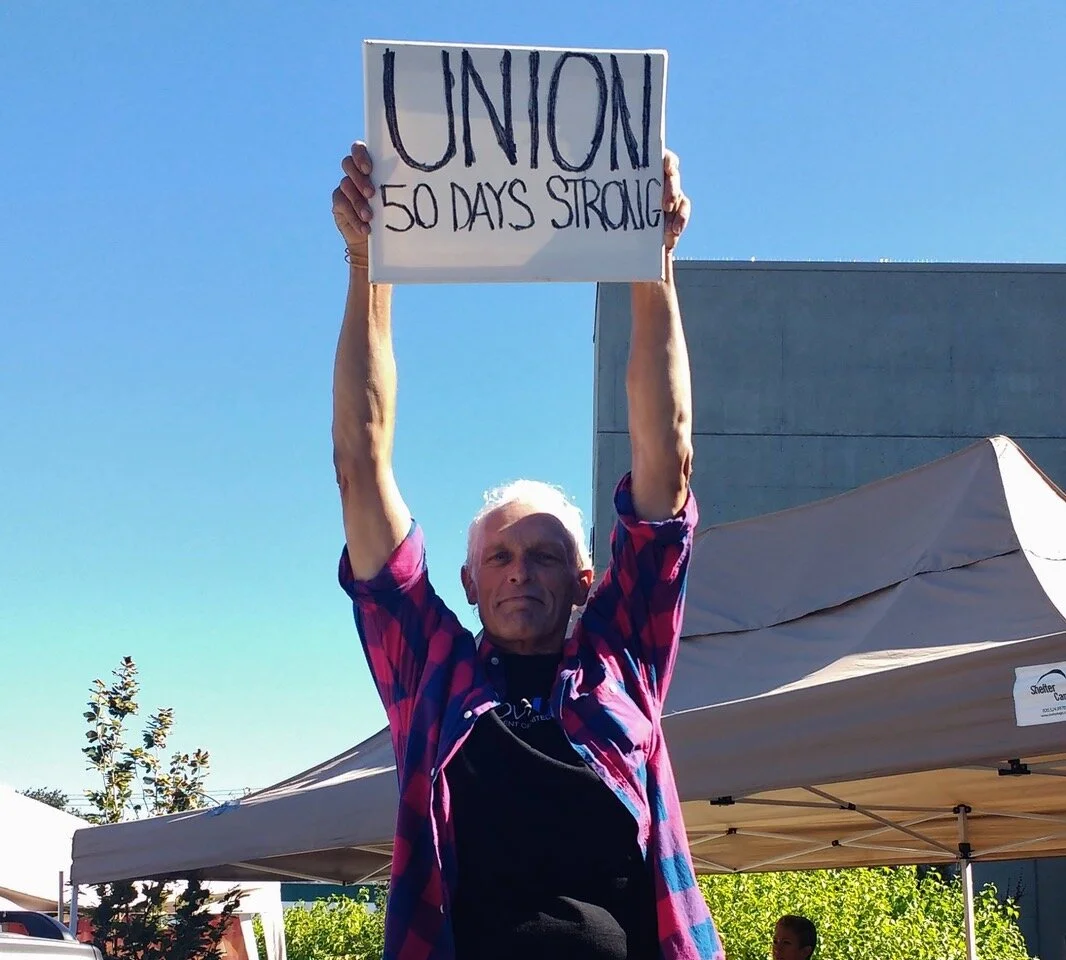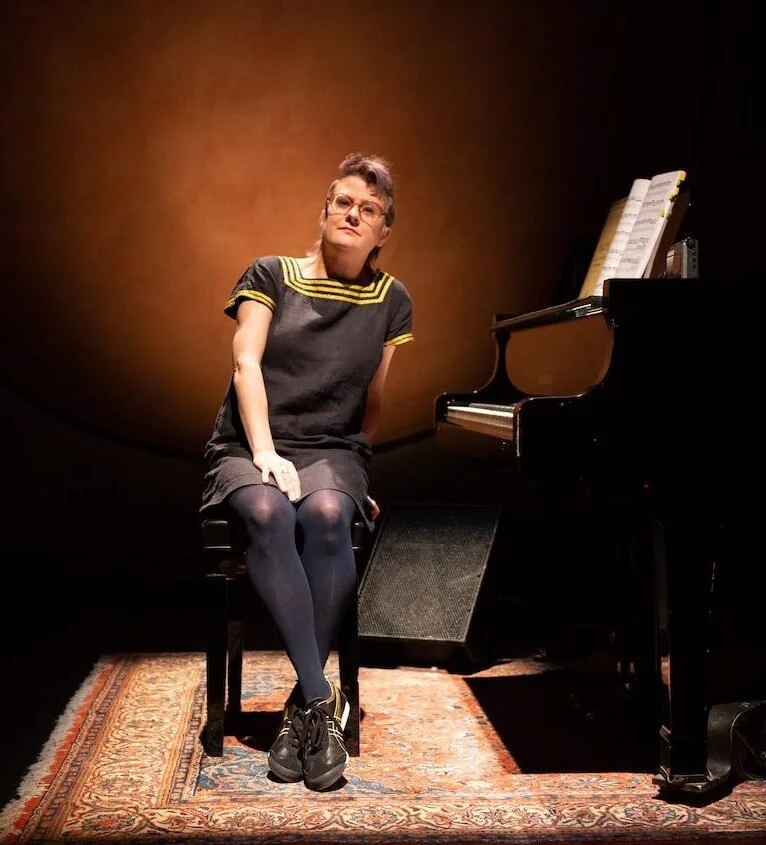Theatre in the time of COVID: Vancouver seasons mix scaled-back live plays with scaled-up digital streaming
Will audiences show up for limited-capacity shows? Will they pay for online productions? The Firehall, the Cultch, and other venue-based companies are about to find out
The Firehall Arts Centre is ready to welcome audiences back inside its theatre this fall.
SHOCKING AND DEPRESSING are just some of the words that the people who run local theatres use to describe the weeks right after COVID lockdown in March.
“It was pretty devastating to undo everything you had been working on for the previous year in terms of putting together a season for 2020-21—never mind cancelling shows for spring 2020,” says Heather Redfern, executive director of the Cultch, which also oversees the York Theatre and Vancity Culture Lab. “We laid the entire staff off in March with three weeks’ notice, but with the advent of CERB and other programs were able to retain some of them. So there were six to eight really dark weeks. Our major source of revenue in the spring is box office, and so it was like someone turned the tap off in terms of cash flow.
“It was difficult and depressing and we cried a lot and it was just about getting people through it psychologically,” she adds. “There was so much we had to grieve and pull apart, with refunds and everything else, and the theatre was full of renters that we immediately lost overnight.”
The Cultch wasn’t alone. A Greater Vancouver Professional Theatre Alliance survey from late March through May found that arts organizations tied to a bricks-and-mortar venue took twice the financial hit of the pandemic than those that weren’t.
The outlook seemed grim. But here we are, six months later, and those same theatre companies, against stiff odds, have managed to pull together seasons with a live component.
Heather Redfern
Donna Spencer
Limited live shows are drawing eager audiences
Early experiments have shown that there is still some demand for live performance.
The Firehall Arts Centre’s executive producer Donna Spencer was one of the first to realize that when she took the leap, organizing outdoor courtyard shows and then an indoor performance of Momentum of Isolation, by Shay Kuebler’s Radical System Art, during July’s Dancing on the Edge festival.
“I said, ‘I just can’t cancel it—it’s the 32nd year of the festival,’” Spencer tells Stir. “When I look back, I say, ‘Was it my ego or did I just feel it was my job?’ I don't know that I would have moved forward if I didn't have staff support.”
Right from the beginning, Spencer looked at livestreamed programming, but felt it wasn’t enough on its own. It still felt disconnected to this theatre veteran. “You're watching something but you're not actually responding with the people you’re watching with,” she explains.
But in those early weeks of the pandemic, there weren’t even official guides about the protocols for bringing back live theatre. Finally, through a Google search, Spencer found a document from the U.S. called the Event Safety Alliance Reopening Guide, built with the expertise of 300 professionals in the live-event industry. It outlined details like rearranging traffic flow, how to handle beverage service, and countless other details that could help make theatregoing safe again.
“What happened was our industry went into shock, and I remember talking to colleagues and saying, ‘But we can actually do things. We can actually do live performance—it’s just whether people will actually come,’’ Spencer recalls.
And come they did, with intense new protocols in place, as the Firehall hosted around 25 people inside its theatre for Kuebler’s contemporary work. ”I almost wept,” Spencer says. “There were all these eager people in masks, and here were these people that created things in isolation, and people were being so moved. That’s when I said, ‘We’ve gotta have something in the fall.’”
Demand for summer offerings continued; a live-music series in the Firehall courtyard was an instant success.
“People were sending me emails saying ‘Thank you so much,’ and musicians were saying ‘Thank you’ too,” Spencer relates. “Some of them hadn't played with anyone else in five months.”
That hunger for live performance is also backed up by the newly released Greater Vancouver Theatre Alliance’s B.C. Patrons Insight Survey. Data collected between July and September showed the majority of patrons (62 percent) reported a high level of eagerness and interest to return to in-person programming across the province. But comfort levels in actually returning to indoor arts events were more evenly split. Interestingly, the survey found 53 percent of patrons had already returned to indoor dining at restaurants, but their plans to return to to indoor arts events within the next two months was about 15 percent to 27 percent.
“What I’m telling organizations is that the reality is not everybody is going to be comfortable,” says the alliance’s executive director Kenji Maeda. “So organizations should hone in on those people who do want to attend, and to make them feel safe and make sure guidelines and physical distancing are in place so people feel safe.
Allan Morgan’s one-man show I Walked the Line is one of the smaller-scaled live shows on the Firehall Arts Centre’s fall-season roster.
Pocket performances and bubble bookings
So what does a theatre season look like in the age of COVID? Think tiny casts, spread out audiences, and gallons of hand sanitizer as a start. The Arts Club has announced three live solo shows, and Presentation House Theatre has unveiled new offerings like “pocket performances” and “bubble bookings” for its smaller-scale season.
The Firehall will welcome audiences of up to 50 back to its fall season—all live, intimately scaled work. The season kicks off October 15 with Allan Morgan’s new one-man show I Walked the Line and includes Jillian Fargey and Shawn Macdonald’s two-hander comedy The Amaryllis in November (coproduced with The Search Party).
COVID protocols dictate almost every detail of each production, Spencer reveals, from the way props are handled to the use of costumes to the number of people who can be backstage. There’s no doubt that affects the creative process and the product that audiences will see.
“You have more homework before you walk into the room, but I don’t think it stops creativity,” Spencer says.
Across the East Side at the Cultch, there will be a few limited-audience live shows. But the pandemic has also brought about a huge new shift to video streaming.
“We had to move fast and had to pivot to becoming an organization that recorded video rather than just presenting live performance--and that meant a massive change of thinking of everything we were doing,” says Redfern.
The opening celebration of the Cultch season, the Transform Cabaret Festival, moves entirely online, says Redfern, explaining, “It’s not the nature of cabaret to just be a one- or two-person show. Because of the whole concept of the festival, we couldn’t have done it live.”
An appetite for livestreaming
The good news from the GVPTA is that there seems to be an appetite for streamed performance—and people might even be willing to pay for it. Fifty-eight percent of British Columbian arts patrons participated in at least one online arts event, and there was an eager 15 percent who had taken in six or more. Meanwhile, 27 percent of patrons were willing to pay 60 percent or more of the regular ticket price for the same live performance if it was broadcast online. “Of course each organization is going to have to look at their own audience for that,” says Maeda.
Veda Hille’s Little Volcano is one of the streaming options at the Cultch this fall.
With so much digital programming, is there a risk that some regular arts patrons might not return to an actual theatre in the foreseeable future? Seventy percent of the alliance’s survey respondents said the availability of a vaccine would make them much more likely to attend an arts event.
Maeda takes that and other evidence as signs the theatre scene has a good chance of bouncing back.
But for now it must stick to the under-50 limit—a model Redfern stresses that will never be financially profitable. Continued emergency funding from all levels of government, and some extension of the wage benefit, will be needed to keep venue-based theatre companies afloat, she stresses. A spring season depends on it.
“I don’t think people realize how precarious it all is, because things sort of feel like they're getting back to normal. And they’re not!” Redfern says.
“A lot of organizations are still at risk of folding because they don’t have the resources to continue,” concurs Maeda. “There are costs to keeping venues open.”
For now, it’s impossible to predict the future. The worst case? Another surge in infections, and quite possibly another shuttering of theatres. But let’s not even go there. What’s more important is that local theatre producers seem to agree on that, whenever the world pulls out of this pandemic mess, Vancouver’s venue-based theatre companies will look a lot different than they did a year ago.
“I see now that our work always will have a digital element,” predicts Redfern of the Cultch’s programming. “It is the best for people who do have barriers, whether that's the cost of a babysitter or physical. And I’m hoping we’re going to build a national and international audience for the work.”
For her part, Spencer displays the kind of grit she’s no doubt built running a theatre in the middle of the Downtown Eastside and a wildly changing city for close to four decades. Even still, she seems strangely re-energized through this crisis—mentally if not physically.
“Even though I’m exhausted I find it really exciting,” the stage veteran says with a laugh. “When we come out of this it’s going to be very different. And we won't be able to go back to the old way we do it.”







